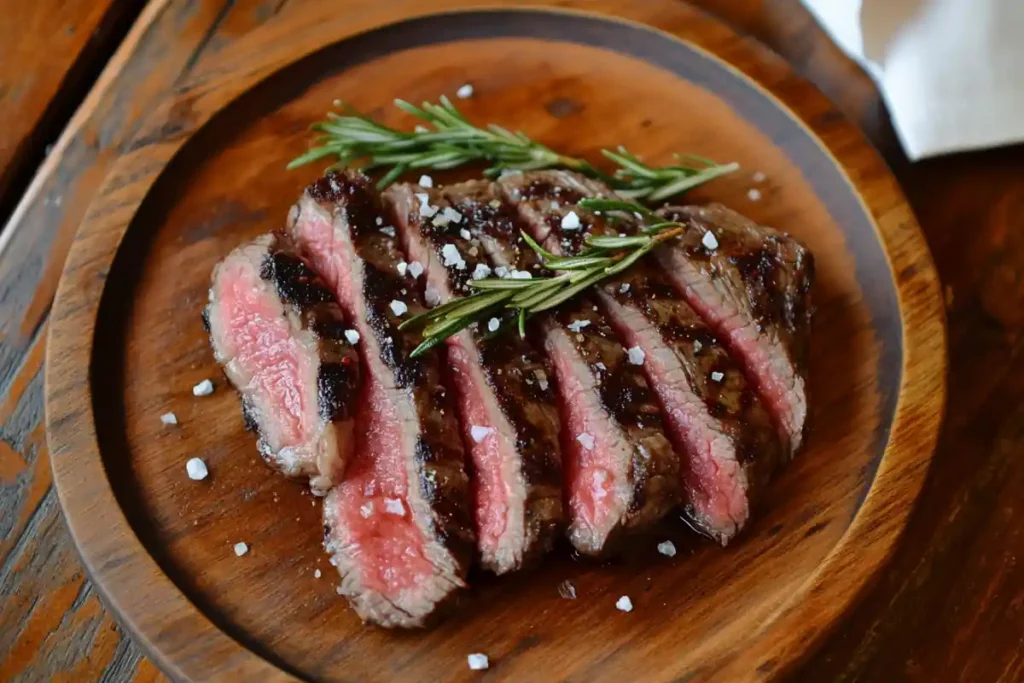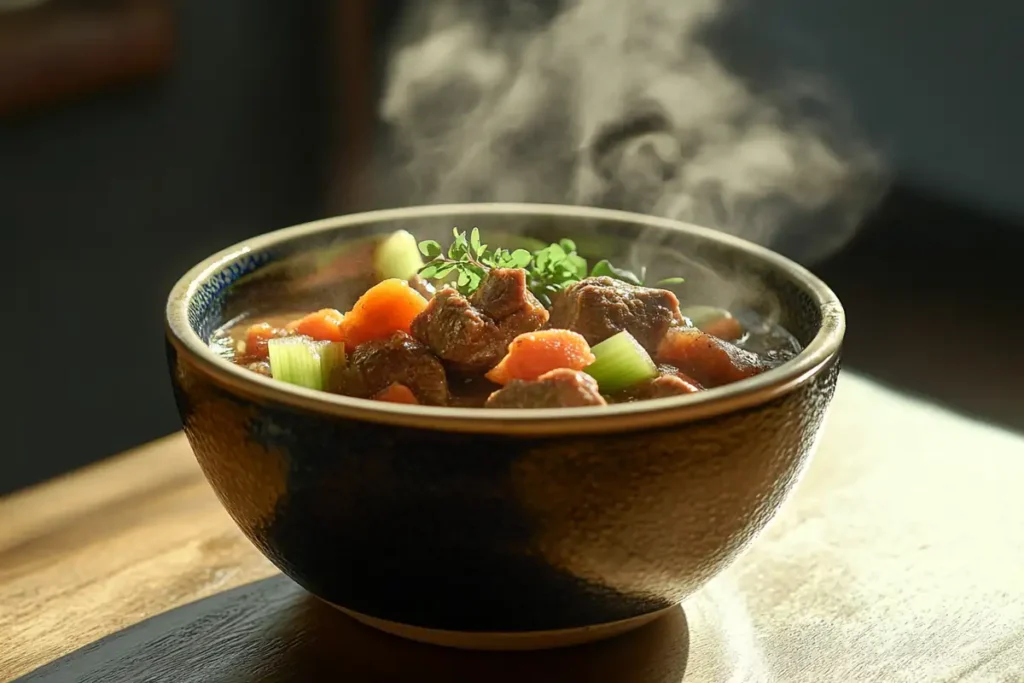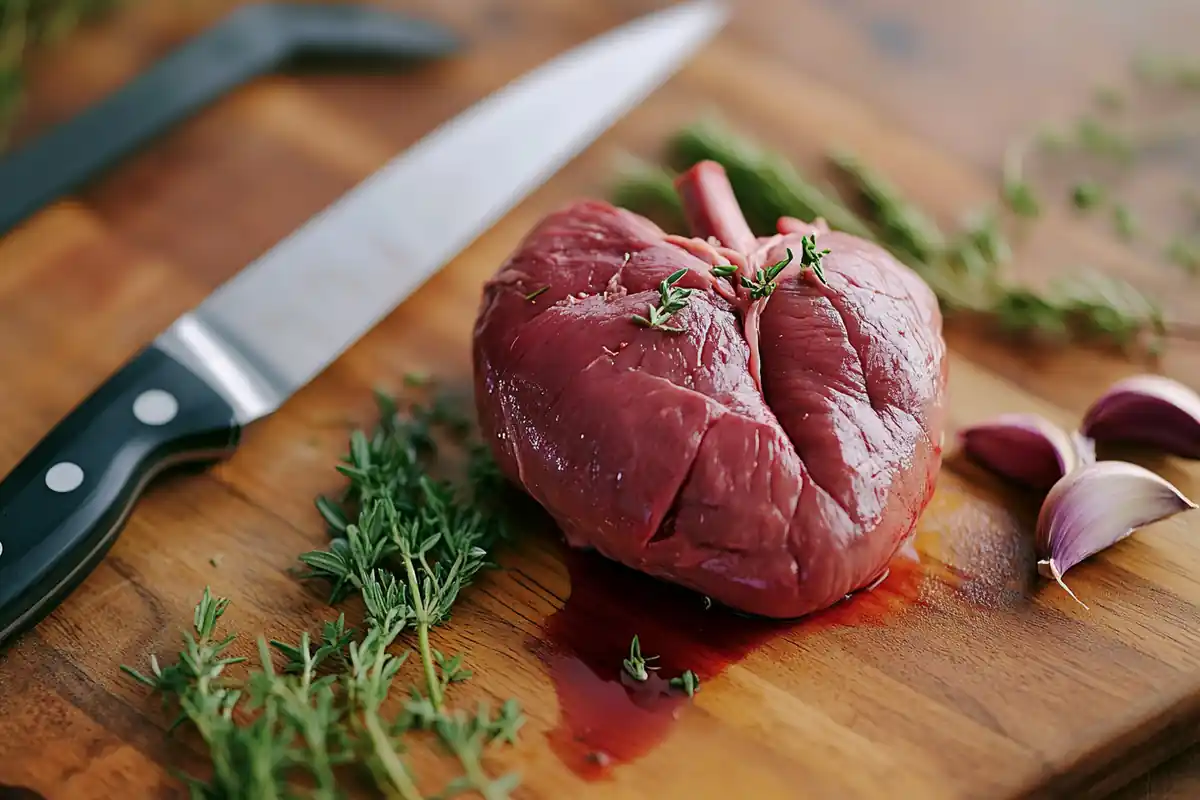Looking for a nutrient-packed cut of meat that’s lean, affordable, and surprisingly delicious? Beef heart might be the secret superfood you’re missing. Loaded with essential nutrients like B vitamins, iron, and CoQ10, this underrated cut supports heart health, energy, and muscle recovery. In this guide, we’ll explore everything you need to know from nutrition and benefits to prep tips and recipes so you can start cooking beef heart with confidence.
Table of Contents
What is Beef Heart and Why It Matters
Understanding Beef Heart: Origin and Anatomy
Beef heart is the actual heart muscle of a cow a powerful organ made mostly of lean muscle fibers. Though it’s technically an organ meat, it behaves more like a steak in texture and taste. Weighing about 3–4 pounds, it’s rich in nutrients and often overlooked in modern diets.
Is Beef Heart Considered Organ Meat or Muscle Meat?
Interestingly, beef heart straddles the line between organ and muscle meat. While classified as offal, its structure and function make it more like traditional cuts of beef. That’s why it’s a great entry point for those new to organ meats mild in flavor, tender when cooked properly, and full of nutritional value.
Nutritional Profile of Beef Heart
Macronutrients in Beef Heart: Protein, Fat, and Calories
One of the most exciting things about beef heart is how lean and protein-rich it is. A 3-ounce serving of cooked beef heart contains:
| Nutrient | Amount (per 3 oz cooked) |
|---|---|
| Calories | 140–150 |
| Protein | 20–22g |
| Fat | 4–5g |
| Saturated Fat | ~1.5g |
| Carbohydrates | 0g |
Micronutrients: Vitamins B12, B2, CoQ10, and Iron
Here’s where beef heart really shines. It’s a nutrient goldmine, especially for micronutrients that are often missing in modern diets. Let’s break down its key micronutrients:
| Micronutrient | Function | % Daily Value (3 oz) |
|---|---|---|
| Vitamin B12 | Energy, red blood cell formation | 250%+ |
| Riboflavin (B2) | Cell function, metabolism | 105% |
| Iron | Oxygen transport, energy production | 40% |
| Selenium | Thyroid support, antioxidant function | 45% |
| Zinc | Immunity, hormone regulation | 35% |
| Coenzyme Q10 | Heart health, cellular energy | ~20–30 mg |

Top Health Benefits of Eating Beef Heart
Boosts Heart Health and Energy
Beef heart is rich in CoQ10, a compound that supports heart function and cellular energy. It also contains Vitamin B12, iron, and selenium, which help fight fatigue, support red blood cell production, and promote a strong immune system.
Natural Source of CoQ10 and B Vitamins
Unlike supplements, beef heart provides a bioavailable source of CoQ10 and B vitamins, improving mental clarity, muscle recovery, and overall vitality. It’s a natural way to enhance your wellness through whole food.
How to Source and Buy Quality Beef Heart
Grass-Fed vs. Grain-Fed
For the best nutrition, go with grass-fed beef heart. It’s leaner, richer in omega-3s, and free from added hormones or antibiotics. Grain-fed options are more affordable but lower in nutrient density.
Where to Buy Beef Heart
You can find beef heart at local butcher shops, ethnic markets, or order online from trusted sources like TruBeef Organic or US Wellness Meats. Look for hearts that are firm, deep red, and vacuum-sealed for freshness.
How to Clean and Prepare Beef Heart for Cooking
Trimming and Cleaning Tips
Start by rinsing the heart under cold water. Then trim off the outer fat, silver skin, and blood vessels using a sharp knife. Open it up and remove any tough tissue for a cleaner, tender result.
Prepping for Cooking
Slice the heart thinly against the grain for grilling or pan-frying. For stews, cube it into 1–1½ inch chunks. To boost flavor and tenderness, marinate it in acidic ingredients like vinegar or lemon juice for a few hours.We’ll get into that in the next section.
How to Cook Beef Heart Like a Pro
Grilling, Sautéing, and Braising: Best Cooking Methods
Beef heart is super versatile it can be tender and juicy when cooked hot and fast or deeply flavorful when braised low and slow. Let’s look at the best methods depending on your time, flavor goals, and equipment.
1. Grilling
- Ideal for sliced beef heart “steaks”
- Brush with oil and season simply (salt, pepper, garlic)
- Cook over high heat for 2–3 minutes per side
- Rest for 5 minutes, then slice thinly against the grain
Result: A beautifully charred outside with a tender, beefy bite inside almost like flank steak, but richer in nutrients.
2. Pan-Searing
- Heat a cast iron skillet until screaming hot
- Add oil or beef tallow, then lay down slices of heart
- Cook for 1–2 minutes per side
- Add a knob of butter and aromatics at the end for a flavor boost
This quick method keeps the meat moist and flavorful, especially when thin-sliced.

3. Slow Braising
- Cube the heart, brown it, and simmer in broth, tomato sauce, or red wine
- Add root veggies or beans for a one-pot meal
- Cook on low heat for 2–3 hours until fork-tender
Braising works wonders if you want something cozy, especially in colder months. It also mellows any intensity in the flavor.
Avoiding Common Mistakes When Cooking Beef Heart
Beef heart is forgiving but only when you avoid these rookie mistakes:
- Overcooking: This is the #1 culprit for tough, rubbery texture. For pan or grill cooking, go rare to medium-rare.
- Skipping the marinade: Without marinating or tenderizing, slices can get chewy.
- Not slicing against the grain: Like flank or skirt steak, cutting against the grain ensures tenderness in every bite.
- Cooking cold: Let it sit at room temp for 15–20 minutes before cooking to avoid muscle shock and toughness.
And here’s a pro tip: always let the cooked heart rest for a few minutes before cutting this helps retain juices and flavor.
Delicious Beef Heart Recipes You’ll Love
Simple Pan-Fried Beef Heart Recipe
This one’s a winner for beginners. It’s quick, flavorful, and hits all the right macros perfect for a weeknight dinner or a post-workout protein bomb.
Ingredients:
- 1 lb beef heart, cleaned and sliced thin
- 2 tbsp olive oil or beef tallow
- 1 tbsp apple cider vinegar or lemon juice
- 1 tsp smoked paprika
- 2 cloves garlic, minced
- Salt and black pepper to taste
- Fresh parsley (optional)
Instructions:
- In a bowl, marinate beef heart slices with vinegar, garlic, salt, pepper, and paprika. Let sit for 30 minutes.
- Heat oil in a cast iron skillet over medium-high heat.
- Add the slices in a single layer. Cook for 2 minutes per side.
- Remove and rest for 3–5 minutes. Garnish with parsley.
Serving tip: Pair it with roasted sweet potatoes or cauliflower mash for a balanced, nutrient-rich plate.
Beef Heart Stew and Stir-Fry Variations
Want something more comforting or great for meal prep? These two variations are crowd-pleasers:
Slow-Cooked Beef Heart Stew
Ingredients:
- 1.5 lbs beef heart, cubed
- 1 chopped onion
- 2 carrots, diced
- 2 celery stalks, chopped
- 3 cloves garlic, minced
- 2 cups beef broth
- 1 tbsp tomato paste
- 1 tsp dried thyme and rosemary
Instructions:
- Brown the beef heart cubes in a Dutch oven.
- Add veggies, broth, tomato paste, and herbs.
- Cover and simmer on low for 2.5 hours or until tender.
Bonus tip: Add a splash of red wine or balsamic for depth of flavor.

Beef Heart Stir-Fry
Ingredients:
- 1 lb sliced beef heart
- 1 tbsp soy sauce or coconut aminos
- 1 tbsp sesame oil
- 1 cup bell peppers, julienned
- 1 cup broccoli florets
- 1 tsp grated ginger
- 1 green onion, sliced
Instructions:
- Marinate sliced heart in soy sauce and ginger for 15 minutes.
- Heat sesame oil in a wok or skillet.
- Stir-fry heart slices for 2–3 minutes. Add veggies and cook until crisp-tender.
Serve over cauliflower rice for a low-carb, high-protein meal.
Beef Heart in Specialized Diets
Perfect for Keto and Carnivore
Beef heart is ideal for keto and carnivore diets it’s zero-carb, high in protein, and packed with CoQ10, iron, and B vitamins. It supports energy, muscle repair, and satiety without added carbs or sugars.
Fits Paleo and Whole30 Plans
Since it’s a clean, unprocessed meat, beef heart works well for Paleo and Whole30 eaters. Just choose grass-fed sources to align with ancestral nutrition and maximize nutrient intake naturally.
FAQs About Beef Heart
What does beef heart taste like?
Mild, beefy, and surprisingly tender closer to steak than liver. Not metallic or gamey.
Is beef heart healthier than steak?
Yes, in many ways. It’s lower in fat and higher in CoQ10, iron, and B vitamins.
Can you eat beef heart raw?
Only if it’s fresh, from a trusted source, and properly cleaned. Otherwise, cook it.
How often can I eat beef heart?
1–2 times per week is ideal for nutritional variety and balance.
What’s the best way to cook beef heart?
Quick pan-fry or grill for tenderness; stew or braise for comfort food.

